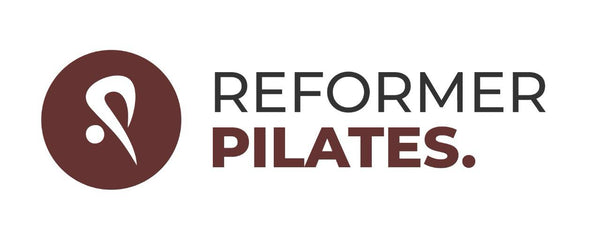Most people hear about Reformer Pilates and imagine sleek movements performed on a strange machine that looks part gym equipment and part yoga tool. The reality is simple. It is a mindful workout style built around strength, balance, control, and breath. The method feels accessible, yet powerful. It supports beginners, athletes, and people in rehabilitation. This guide explains what it is, why it works, and how you can start with confidence.
A rising number of wellness-focused brands, including Reformer Pilates studios, are building programs that help people feel aligned, strong, and connected to their bodies. The experience is structured, yet flexible enough to grow with you.
What Is Reformer Pilates?
At its core, Reformer Pilates is a movement method performed on a sliding platform called a reformer. Springs, straps, and a moving carriage allow for resisted and supported movements. The machine guides the body through controlled ranges without strain. The result is focused strength rather than brute force.
The method trains deep stabilising muscles, which often go ignored during traditional workouts. Movements are slow and intentional. That pace promotes body awareness and helps build joint stability.
Why People Choose This Method
Many fitness seekers choose this method because the movement feels intelligent. It does not punish the body. It strengthens without compression. There is an emotional benefit as well. People report feeling centred and refreshed after a session. The experience is almost meditative.
Results often include increased flexibility, improved posture, and stronger muscles around the core and spine. That makes profitability in wellness terms: you invest effort and receive lasting results.
How the Equipment Works
The reformer might appear intimidating at first. Yet, the setup is logical—the carriage slides. The springs provide tension that adjusts the difficulty. The straps assist or challenge, depending on the exercise. Foot bars and head supports allow comfort and safety. Once you understand the parts, the entire system feels intuitive.
Beginners usually start with guidance from an instructor. Support matters, especially when learning to engage deep muscles rather than relying on larger, dominant ones.
Benefits You Can Expect
The benefits go beyond visible toning. Many people experience relief from tight joints or chronic stiffness. The method strengthens the core, hips, and back. It improves balance and stabilises posture. Movements also encourage mobility in smaller muscle groups, thereby enhancing alignment in everyday life.
Is It a Beginner?
Yes. Anyone can start, even without prior experience. The reformer supports controlled motion, which reduces risk. The body learns safe movement mechanics step by step. People recovering from injury often prefer this method because it is adaptable.
Most studios, including Reformer Pilates style training programs, offer beginner classes. You can move at your own pace. Instructors modify exercises based on ability, pain level, and goals. There is no need to force progress. The practice grows with you.
How to Prepare for Your First Session
Wear comfortable, fitted clothing. Loose fabric can catch on the machine. Socks with grip are helpful, though not always required. Hydrate lightly before class, and arrive early to become familiar with the equipment.
Ask questions during your session. Instructors are trained to guide form with support, not pressure. Focus on breath and alignment. Speed is never the objective. Control always comes first.
What Results Look Like Over Time
People often notice improved stability, tone, and posture within a few weeks. Over time, the changes become profound. Movements that once felt difficult become fluid. The body becomes aligned, strong, and responsive.
That long-term change reflects both practice and patience. When people stay consistent, they gain deep strength. For many, it becomes a lifelong wellness tool rather than a short-term trend.
Why the Practice Feels Different
This method does not rely on intensity. Instead, it uses deliberate motion supported by mindful breathing. The reformer helps guide movement in a way that feels structured yet creative. You learn how your body operates and how to move without strain. That body intelligence improves every other workout and daily posture.
Final Thoughts
Reformer Pilates offers a meaningful approach to fitness. The practice encourages thoughtful movement, steady strength, and balanced alignment. It respects the body and supports growth without aggression. For beginners, the method feels both inviting and rewarding. Over time, it becomes more than exercise; it becomes a way to move through life with awareness and confidence.
Whether you join a studio using modern techniques or follow traditional training principles, the method remains the same. It is innovative, mindful, and profoundly effective.
If your goal is long-term wellness, controlled strength training, and healthy progression, this method supports that path with clarity and intention.
FAQs About Reformer Pilates
1. Is Reformer Pilates suitable for all fitness levels
Yes. The practice is accessible for beginners, experienced athletes, and people recovering from injuries. Movements can be modified to support comfort and safe mobility. The reformer helps guide alignment while building stability at a manageable pace.
2. How often should I train to see results
Most people notice positive changes with two to three sessions each week. The key is consistency; progress feels natural rather than forced. Over time, shape, strength, and posture improve.
3. Does the workout help with back or joint pain
Many individuals report relief when their core muscles strengthen and their posture improves. The controlled movements support body mechanics without strain. With proper instruction, the practice may help correct patterns that contribute to discomfort.
4. Will I lose weight using this method
Weight change is possible, but the main transformation often appears in tone, alignment, and muscle engagement. When your body moves efficiently, energy improves.
5. What should I expect during my first class
Expect slow movements, clear instructions, and intentional breath-work. The pace allows your body to learn control rather than rush. Most newcomers leave feeling lighter, stronger, and more aware of posture and muscle activation.

